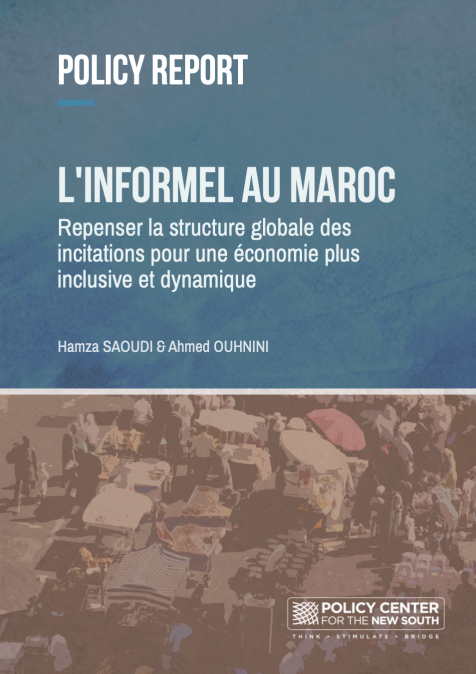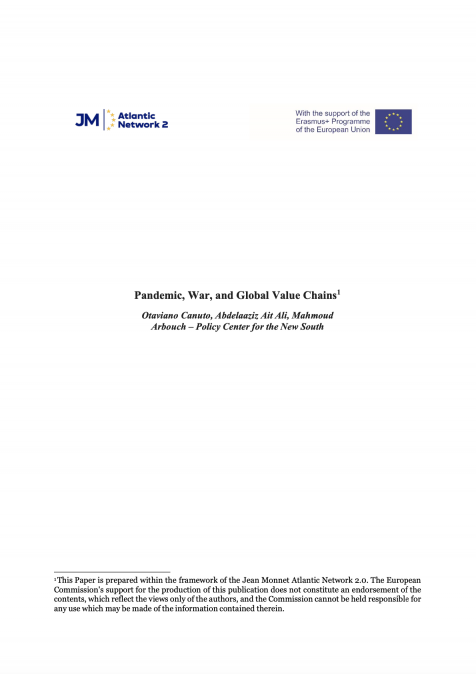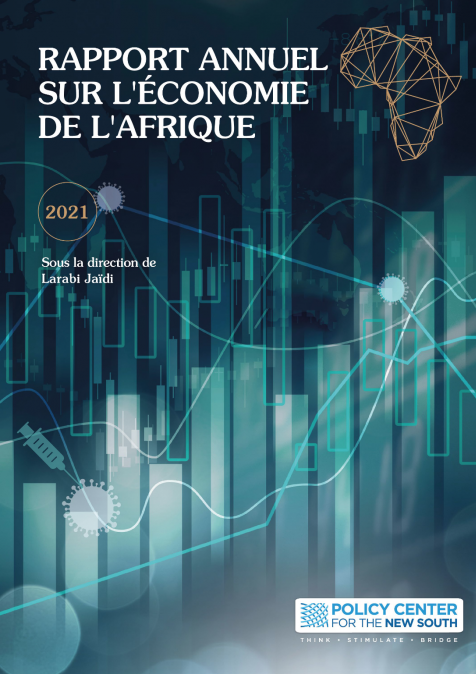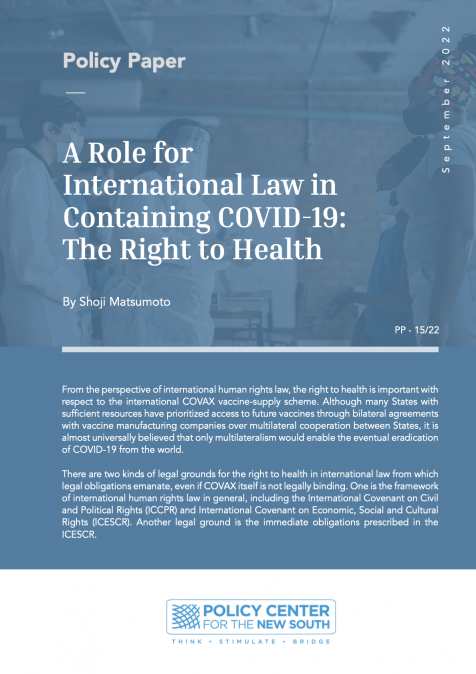Publications /
Opinion
Getting vaccines into the arms of the right people, those most at risk of dying from the disease, could radically reduce the death rate from COVID-19 within months. It would also normalise the situation in hospitals, trigger a swifter economic recovery than is widely anticipated, and dramatically reduce the need for borrowing by governments that future generations will have to repay. Vaccination has become even more urgent as new, more infectious strains of the virus have spread to dozens of countries.
Unfortunately, the United States has vaccinated only 309,000 people (or 0.09% of its population) a day since the BioNTech-Pfizer vaccine was approved for emergency use on 12 December, a big shortfall against the declared target of 1 million a day. The European Union has done worse. Since approving the vaccine on 21 December, it has vaccinated just 137,000 people a day, equal to 0.03% of its population. The United Kingdom was the first to approve the BioNTech-Pfizer vaccine on 3 December and since then has vaccinated 69,000 people (or 0.1%) per day. By contrast, Israel, a nation of 8.6 million, has vaccinated almost 125,000 people a day (or 1.5% of its population) since the start of its programme. It is presently aiming to vaccinate 200,000 a day in coming weeks. This is a target that may or may not be met, but which the government has announced and will be held to in the coming election. While Israel has already vaccinated nearly 21%of its population (Israeli Arabs have been vaccinated but not Palestinians in territories under Israeli control), the United Arab Emirates has vaccinated 11% and Bahrain 6%, France, which lags the rest of Europe, has vaccinated just 0.21% of its population (the share of people vaccinated in the UAE and Bahrain refers to the total resident population in those countries, including foreign workers, not only to citizens).
Although much is made of vaccinations being easier in small countries with national health systems such as Israel and the UAE, smaller European nations have done no better than larger ones (Figure 1), and all European nations (unlike the United States and like Israel) rely heavily on the public health system.
Across the world, vaccines will remain a scarce resource for the foreseeable future. However, despite all the handwringing about the availability of vaccines, the dismal outcomes in vaccination in advanced nations are not only due to vaccine shortages. In many localities, vaccines are available but are not being used. In the United States, for example, only about 36% of vaccine doses which have arrived at the point of care have been administered. In California, presently an epicentre of the disease, just 27% of delivered vaccines have been used. Rates of use are even lower in many European regions. For example, while in Tuscany, two thirds of vaccine doses delivered had been used as of 6 January , only 11% had been used in Calabria.
So, what would it take to increase dramatically the daily vaccination rate? Below are four steps, each of which require leadership at the highest level of government:
- Treat vaccinations as one would a matter of national security;
- Set tough targets and make officials accountable,;
- Adopt clear rules on who should get the vaccine first,;
- Ensure that delivery is managed all the way to the point of care.
National security
Presently, 2600 Americans die of COVID-19 on an average day, not counting increased mortality from other causes as hospitals are overwhelmed and the economy falters (by way of comparison, the average daily death toll for US soldiers during the Second World War was 300). Meanwhile, despite massive counter-cyclical measures to fight the effects of the pandemic, US GDP is about 5% below its pre-crisis trend, a loss equivalent to $13,500 per annum for a family of four. Scaling for the size of population and of the economy, Europe is in similarly dire straits, or worse.
Considering these enormous losses, and the possibility of preventing them, every day counts. Vaccination campaigns should thus be conducted in the same way a national security crisis would be approached. What does this mean? During times of war, there is a clear chain of command and responsibility at each level of decision-making, a readiness to sacrifice by reorienting production and consumption to defeat the enemy, and a willingness to take calculated risks that one would not ordinarily take. This is hardly without precedent in democracies. Over 1941-1945, the United States reallocated approximately half of its economy to the conduct of the war and production of weapons (the US navy grew from 790 combatant vessels to 6768, for example). Huge risks were taken: the outcome of the landings in Normandy was far from a foregone conclusion, for example.
Miraculously, vaccines developed at record speed, such as BioNTech-Pfizer and Moderna, are safe and approach 100% efficacy against serious disease. The Astra-Zeneca vaccine is less effective in preventing infection but also appears nearly 100% effective in avoiding serious disease and death. The data on Chinese and Russian vaccines in advanced trials is less reliable, but it appears likely that they provide adequate protection. Due credit should be given to all the government officials and firms involved. However, it is not unreasonable to claim that if the United States and Europe had faced the vaccination challenge like a war, vaccines would have been approved weeks earlier, orders for vaccines would be larger, and production would be greater still. Most obvious, since the arrival of effective vaccines was expected as far back as this summer, the supply and inoculation chain should have been more effectively planned. Even now, vaccines that require a second dose could be applied more widely (as done in the UK and as just announced for the US by President-elect Biden when he takes office), even at the risk of having to delay a second dose. If all this had been done, fewer people would have died or would be expected to die in coming months.
Tough targets
President-elect Biden has set a target of 100 million vaccinations in his first 100 days, equal to 0.3% of the US population a day. Compared to the current rate, that is a five-fold escalation and appears ambitious. But is it? If Israel can declare a target of 2% a day, surely the US could aim for more than 0.3% a day. How about 1% a day, or 3.3 million a day, instead? The exact target matters less than that it should be realistic and set high enough to focus everyone’s mind on how to maximise output across the whole vaccination chain – ie, approval of new vaccines coming on stream, production of vaccines, their distribution, and inoculation.
Once set, delivery of a target requires allocation of clear responsibilities at every stage of the process. In the distribution and inoculation phases – which are the most organisationally challenging in many respects – responsibilities must be established across geographies. Allocating clear responsibilities at the local level is important everywhere, but critical in a federal system as in the United States. Achieving inoculation targets across different geographies requires a clear set of priorities about who gets the vaccine.
Who gets the vaccine first?
Many believe that the purpose of vaccination is to achieve herd immunity, requiring inoculation of between 70% and 80% of the population. But even assuming enough people want to be vaccinated, this objective is not only unachievable within a reasonable timeframe – one that avoids many more fatalities – but is also questionable. In an open economy, eradicating the virus can only be achieved by hermetically closing borders or by achieving global herd immunity. Global herd immunity – requiring the vaccination of 5 billion people uniformly distributed in proportion to population across the world – is even further out of reach. The mistaken belief that herd immunity – or something awfully close to it – is a sufficient and necessary condition for the health crisis to be overcome is a source of confusion and diverts attention from the main and urgent purpose of vaccination at this stage.
The right way to think about vaccination now is that it aims to radically reduce the incidence of serious COVID-19 illness and death and to ensure that the health system returns to normal operating conditions, enhancing healthcare across the board and allowing the economy to recover as lockdown measures are eliminated. That means vaccinating those most at risk as quickly as possible. The vaccination campaign is not a marathon, it is a sprint.
Take the United States. Approximately 40% of US COVID-19 deaths occur in nursing homes, which house about 1.7 million people. Initial reports suggest that, alive to the danger of COVID-19, the vast majority of those cared-for in nursing homes are prepared to be vaccinated. Next in line would be Americans over 65 (excluding those in nursing homes) who account for about 48 million people and another 40% of COVID-19 deaths. Over-65s who are infected are also far more likely to be hospitalised than younger patients. Next would be American adults under 65 who are severely obese (with a Body Mass Index over 40) and likely suffer from comorbidities such as diabetes. This group probably accounts for about 15 million people and another 10% of the deaths from COVID-19. Thus, a rough count of the American population most at risk from COVID-19 would amount to 65 million people and account for 90% of all deaths. Adding vulnerable front-line healthcare workers (ie those dealing directly with COVID-19 patients and who are at risk of serious disease if infected) may add another 2 to 5 million to the list. If President-elect Biden delivers on his promise of 1 million vaccinations a day – which is not what should be considered to be a stretch target – and these vaccinations come on top of those already completed, by the end of March the death rate from COVID-19 could be little different to that from seasonal flu (most estimates place the case fatality rate of COVID-19 at near 0.4%, whereas the case fatality rate of seasonal flu is typically placed at lower than 0.1%).
Managing delivery
Although much effort is expended convincing people that the vaccine is safe and effective, and everyone should take it, the reality is that there is huge excess demand for vaccines that is not being met, and this excess demand is concentrated – not surprisingly – among those most of at risk. Normally, the best way to satisfy demand is to allow markets to work. But, if one relied purely on the market, the price of vaccines would rise to thousands of dollars, the rich and their offspring would be protected, while the poor would be excluded, and there would be little correlation between vaccination and risk from the virus. Relying on the market to allocate vaccines would thus mean more delay in the health and economic recovery and more inequality.
Rationing of any kind is not a familiar concept, especially in the richest economies, but in this case it is inescapable. Based on efficiency and equity criteria – to minimise disease and economic disruption – there is no doubt that the vaccine should go first to the old and sick and to front-line workers. This does not mean that the young and healthy should not be vaccinated, only that, given the far lower disease risks they run, they should be lower on the list. But government decisions are rarely based only on efficiency and equity: power, ideology, and rent-seeking also count, and often play the most important role. For example, powerful healthcare unions can insist, and have done so (for example, in Italy) that all healthcare workers must come first, even though most of this large group run no more COVID-19 risk than the population at large. Employers and unions can insist, and have done so (ie in the United States) that all ‘essential workers’ – those that cannot work remotely – must be prioritised ahead of older people, even though most essential workers are young and healthy. Advocacy groups push for minorities to be among the first to be vaccinated on account of the comparatively high incidence of disease among them, even though most are young and healthy. Politicians can use their leverage to go to the front of the queue ostensibly on account of their important functions, or, more cynically, to ‘give an example’. Even more pernicious, systemic corruption can become the arbiter of the allocation of vaccines.
In vaccination as in all other policy endeavours, the quality of governance will play a crucial role in determining outcomes. One implication is that the integrity of the system depends not only on the appropriate priorities set at the national level but also at every level of the inoculation chain. For this reason, criteria should be as simple and verifiable as possible, and designed to avoid allowing too much discretion at the point of care. The age criterion (ie over-65) is simplest to set and verify. The comorbidity criterion is more complicated but can also be verified based on pharmacy records or by body weight. Countries or localities that have established electronic medical records – which is far from being the case in the United States, for example – have an obvious advantage in identifying priorities by comorbidity.
However, clear priorities are not enough. The conduct of mass vaccination requires a managerial approach, much like the operation of a complex production chain. The elements of such a process are well known and need not be elaborated in this note. Clearly, they include:
- Adequate human and space resources;
- A logistics chain ending in vaccination points that are easily accessible,;
- Information for patients as to when and where they need to go to be vaccinated,;
- Incentives and – where necessary – penalties for those responsible to use up the available stock of vaccines rapidly.
It should be obvious that simply delivering a load of vaccine to a hospital or a pharmacy and expecting the principal to manage is not enough. Yet this is as far as the vaccination chain management appears to have progressed across many parts of the United States and Europe. In countries such as Belgium and Germany, though hundreds of dedicated mass vaccination centres have already been set up, they must await the arrival of enough vaccines before becoming operational.
It was Georges Clemenceau who said “war is too important to be left to the generals”. Given the death and economic destruction wrought by COVID-19, and the failure to deploy the most important remedy – vaccination – effectively, it is time for heads of government in Europe and the United States to take the lead. They need to instil a greater sense of urgency than is presently evident in many administrations, ensure that the chokepoints in the vaccination chain are identified, and that, where needed, a whole-of-government approach resolves them.
I thank without implicating my colleagues Suman Bery, Marek Dabrowski, Jean Pisani-Ferry, Scott Marcus, Andre Sapir, Reinhilde Veugelers, and Guntram Wolff for useful comments.
This article was originally published on Bruegel. https://www.bruegel.org/2021/01/a-matter-of-life-and-death-governments-must-speed-up-vaccination/







